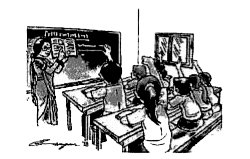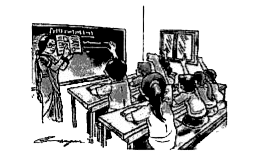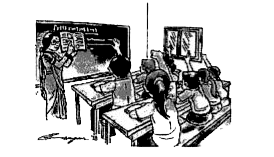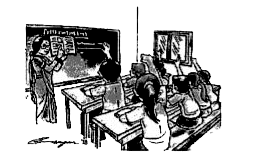(251+252+253+254+255) is divisible by
A) 23
B) 58
C) 124
D) 127
The correct Answer is:C
To solve the expression 251+252+253+254+255, we can factor out the smallest power of 2, which is 251.
Step 1: Factor out 251
251+252+253+254+255=251(1+2+22+23+24)
Step 2: Simplify the expression inside the parentheses
Now we simplify the expression inside the parentheses:
1+2+22+23+24=1+2+4+8+16
Calculating this gives:
1+2=33+4=77+8=1515+16=31
Thus, we have:
1+2+22+23+24=31
Step 3: Substitute back into the factored expression
Now substituting back, we get:
251⋅31
Step 4: Determine divisibility
Now we need to check the divisibility of 251⋅31.
- 251 is clearly divisible by 2 and all higher powers of 2.
- 31 is a prime number.
Conclusion
Thus, the expression 251+252+253+254+255 is divisible by 31 and 251.
To find the options provided, we can check the divisibility of 251⋅31 against the options given:
- Option A: 23 (not a factor)
- Option B: 58 (not a factor)
- Option C: 124 (which is 4⋅31 and is a factor)
- Option D: 127 (not a factor)
The answer is that the expression is divisible by 124.
251+252+253+254+255=251(1+2+22+23+24)
Now we simplify the expression inside the parentheses:
1+2+22+23+24=1+2+4+8+16
Calculating this gives:
1+2=33+4=77+8=1515+16=31
Thus, we have:
1+2+22+23+24=31
Now substituting back, we get:
251⋅31
Now we need to check the divisibility of 251⋅31.
- 31 is a prime number.
Thus, the expression 251+252+253+254+255 is divisible by 31 and 251.
- Option A: 23 (not a factor)
- Option B: 58 (not a factor)
- Option C: 124 (which is 4⋅31 and is a factor)
- Option D: 127 (not a factor)
Topper's Solved these Questions
- POWER, INDICES AND SURDSBook:KIRAN PUBLICATIONChapter:POWER, INDICES AND SURDSExercise:Type -V
Explore 53 Videos
- POWER, INDICES AND SURDSBook:KIRAN PUBLICATIONChapter:POWER, INDICES AND SURDSExercise:Type -VI
Explore 17 Videos
- POWER, INDICES AND SURDSBook:KIRAN PUBLICATIONChapter:POWER, INDICES AND SURDSExercise:Type -III
Explore 52 Videos
- PIPE AND CISTERN Book:KIRAN PUBLICATIONChapter:PIPE AND CISTERN Exercise:TIPE-IV
Explore 9 Videos
- PROFIT AND LOSS Book:KIRAN PUBLICATIONChapter:PROFIT AND LOSS Exercise:TEST YOURSELF
Explore 23 Videos
Similar Questions
Knowledge Check
(32.51)2−(17.45)2=?
A780B850C680D750?2=32+92−54
A6B7C8D9
cos2720−sin254∘=
View SolutionStatement-1 : 51×52×53×54×55×56×57×58 is divisible by 40320 Statement-2: The product of r consecutive natural numbers is always divisible by r!
View SolutionFor teaching the concept of probability, Mrs. Verma decided to use two dice. Shet took a pair of die and write all the possible outcomes on the blackboard. All possible outcomes wave:

(1,1), (1,2), (1,3), (1,4), (1,5), (1,6)
(2,1), (2,2), (2,3), (2,4), (2,5), (2,6)
(3,1), (3,2), (3,3), (3,4), (3,5), (3,6)
(4,1), (4,2), (4,3), (4,4), (4,5), (4,6)
(5,1), (5,2), (5,3), (5,4), (5,5), (5,6)
(6,1), (6,2), (6,3), (6,4), (6,5), (6,6)
The probability that 4 will not come up on either of them is
View SolutionFor teaching the concept of probability, Mrs. Verma decided to use two dice. Shet took a pair of die and write all the possible outcomes on the blackboard. All possible outcomes wave:

(1,1), (1,2), (1,3), (1,4), (1,5), (1,6)
(2,1), (2,2), (2,3), (2,4), (2,5), (2,6)
(3,1), (3,2), (3,3), (3,4), (3,5), (3,6)
(4,1), (4,2), (4,3), (4,4), (4,5), (4,6)
(5,1), (5,2), (5,3), (5,4), (5,5), (5,6)
(6,1), (6,2), (6,3), (6,4), (6,5), (6,6)
The probability that 5 will come up at least once is:
View SolutionFor teaching the concept of probability, Mrs. Verma decided to use two dice. Shet took a pair of die and write all the possible outcomes on the blackboard. All possible outcomes wave:

(1,1), (1,2), (1,3), (1,4), (1,5), (1,6)
(2,1), (2,2), (2,3), (2,4), (2,5), (2,6)
(3,1), (3,2), (3,3), (3,4), (3,5), (3,6)
(4,1), (4,2), (4,3), (4,4), (4,5), (4,6)
(5,1), (5,2), (5,3), (5,4), (5,5), (5,6)
(6,1), (6,2), (6,3), (6,4), (6,5), (6,6)
The probability that 6 will come up on both dice is
View SolutionFor teaching the concept of probability, Mrs. Verma decided to use two dice. Shet took a pair of die and write all the possible outcomes on the blackboard. All possible outcomes wave:

(1,1), (1,2), (1,3), (1,4), (1,5), (1,6)
(2,1), (2,2), (2,3), (2,4), (2,5), (2,6)
(3,1), (3,2), (3,3), (3,4), (3,5), (3,6)
(4,1), (4,2), (4,3), (4,4), (4,5), (4,6)
(5,1), (5,2), (5,3), (5,4), (5,5), (5,6)
(6,1), (6,2), (6,3), (6,4), (6,5), (6,6)
The probability that both numbers comes up are even, is
View Solution
